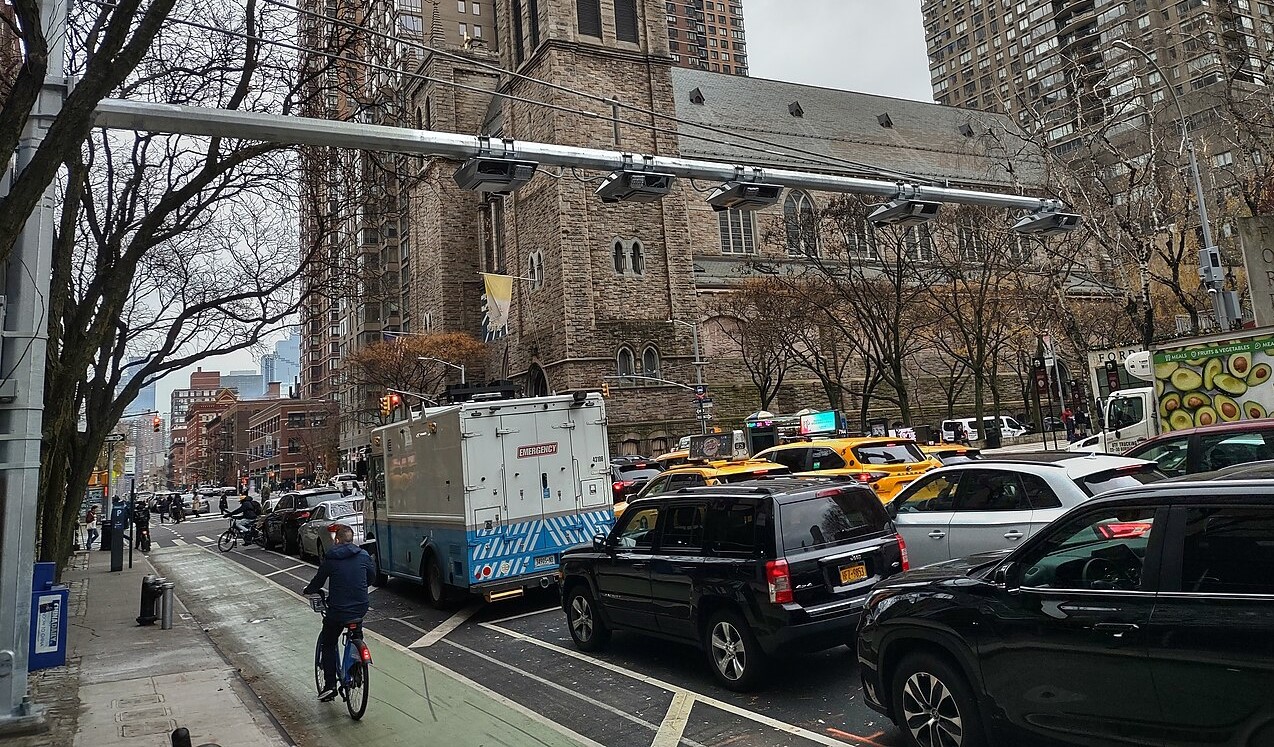
As New York State sets up a commission to study the costs and benefits of New York City's congestion pricing proposal, a new study by the Clean Air Task Force finds that, for many New Yorkers, the greatest exposure to dangerous and unhealthy air pollution comes during the daily commute. "Although we spend only about six percent of our day commuting to and
from work, it is during that time when we receive over half of our
exposure" to diesel exhaust, researchers found.
CATF is a nonprofit organization dedicated to restoring the environment through scientific research, public education, and legal advocacy. They are responsible for research at New York University that linked asthma rates in the Bronx to traffic pollution.
This more recent study investigates the levels of diesel particles during commutes in several cities (Austin, Boston, Columbus and New York City). CATF measured pollutant levels during commutes by car, transit bus, commuter train, ferry, and while walking. One surprise among the findings is that pollution levels measured inside cars, buses and trains were many time greater that levels in the air outside at the same time.
The report makes several recommendations like banning the use of diesel in underground tunnels and installing catalyzed diesel particulate filters which can reduce exhaust by 90%. New York City's diesel-electric hybrid buses were singled out as a possible solution because their exhaust levels were barely detectable.
The report found that even short exposures to these harmful pollutants have a wide range of serious health effects. Only a few hours of breathing diesel particles may lead to:
- Irritation of nose and eyes, respiratory/lung function changes, cough, headache, fatigue and nausea.
- Pulmonary inflammation found after one hour of exposure to diesel exhaust.
- Increased risk of pulmonary inflammation to asthmatics after two hours of exposure.
- Adverse cardiovascular effects. Changes in heart rate variability, heartbeat and blood indices were recorded in North Carolina Highway troopers exposed to elevated in-vehicle particulate matter during midnight to 9 AM shifts.
- Doubled risk of death due to stroke. Risk increased by a factor greater than two within two hours of exposure to high levels of fine particles in a Japanese study.
- Suppressed defense mechanisms and increased susceptibility to lung bacterial infection for a week after exposure. Rats exposed to diesel exhaust for four hours per day for five days experienced prolonged growth of bacteria in the lung during exposure.





